
6 Myths and misconceptions about data projects
As I considered how to promote my new book on driving data projects, I wanted to include myths and misconceptions that reinforce their value. I have experienced many of these in teams I’ve worked on or with. Data projects are not a static set of routines. It's a constantly evolving, open-to-innovation process.
Only 54 percent of organizations fully understand the value of project management, according to PMI's Pulse of the Profession™ report. That might explain, in part, why project success rates are so low: Less than two-thirds meet their original business intents.

Rethinking Remote work: again
Virtual work has been going through a shift for over forty years. I know, it’s hard to believe that anything before the 2000s counts. But there were hopes and dreams for flexible hours and work-from-home initiatives as early as the 1970s—they were fringe, but they were there.
Considering what is happening in the world today, it is interesting to note that data is a great enabler of diversity, equity, and inclusion and a general concept of fairness and democratization. Data busts silos and flattens barriers between functions. As this distribution is occurring, there will also be some disruptions.
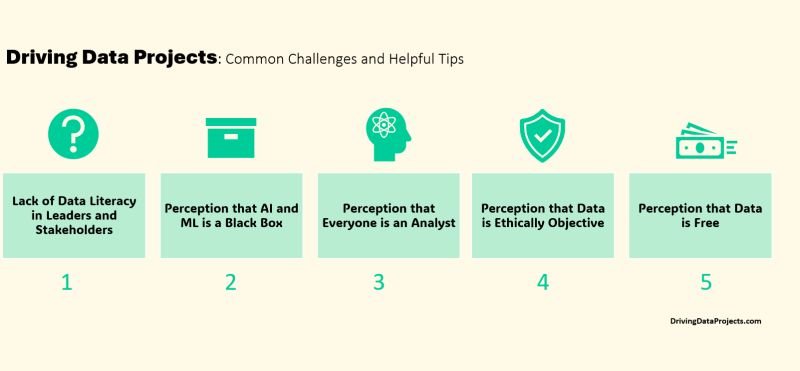
Tips and Challenges
As we continue to drive data projects, familiar challenges begin to present themselves. By observing, we can become better diagnosticians of systemic issues. Learn what to avoid and how to navigate them better.
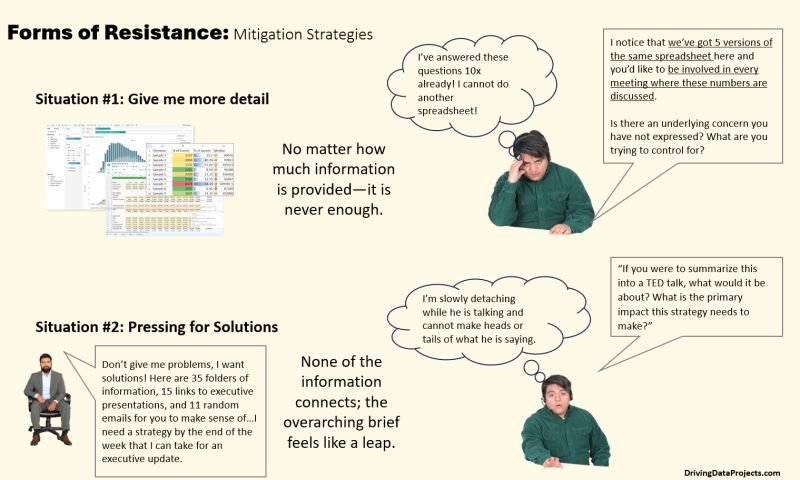
Resistance and Mitigation Strategies
Change management wouldn’t be so hard if it weren’t for…the people. Open issues or objections left unresolved today cost time down the road. Suppose work starts before these concerns are mitigated. Stakeholders might get frustrated or begin to hold back their participation. Work produced might have difficulty getting implemented. Buy-in realizes impact.
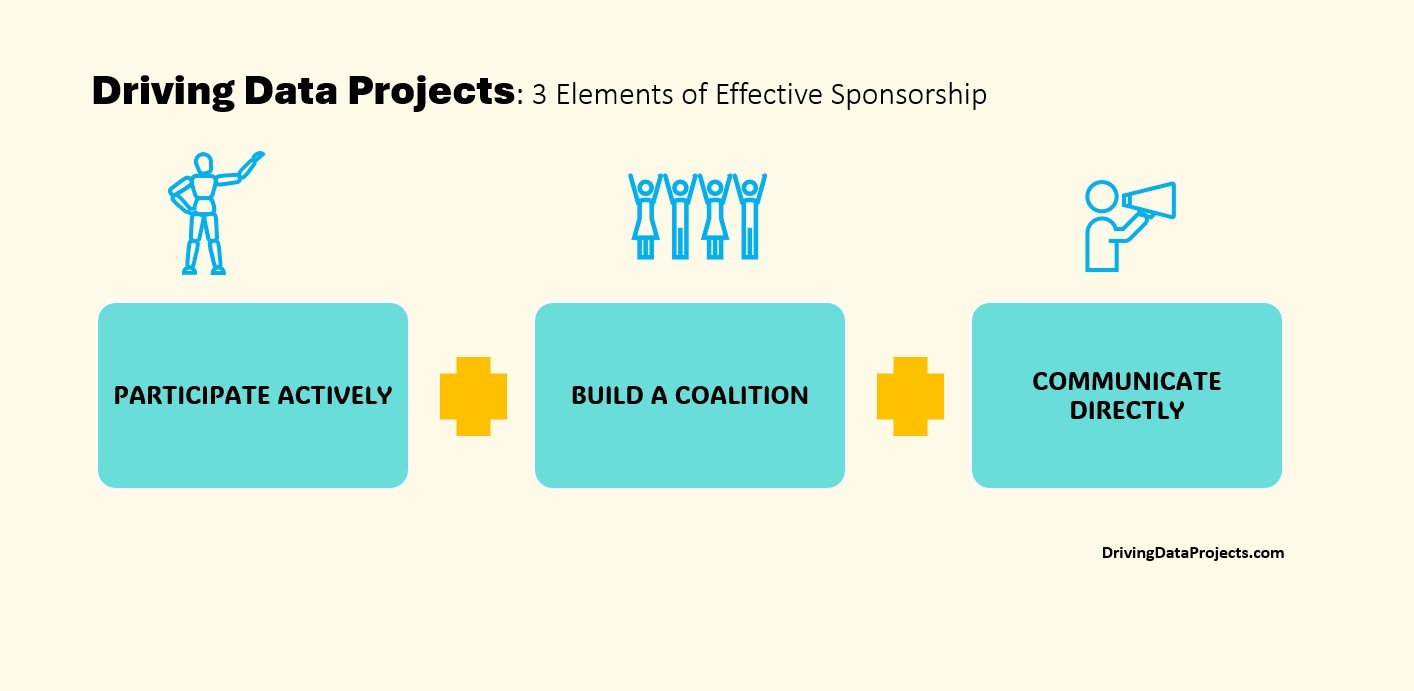
3 Elements of Effective Sponsorship
A popular misconception of senior leadership is that effective executive sponsorship is a clearly understood skill. Many assume executives receive developmental feedback about becoming effective sponsors. Sadly, there is little training on sponsorship from middle management on up.

Linking Projects to Strategy
It can be challenging when stakeholders cannot translate business questions into technical requirements or do not provide enough context for data teams to do so. From there, the data team is often left to maintain the status of a series of ad hoc projects rather than connect these business questions to a larger more defined data strategy.
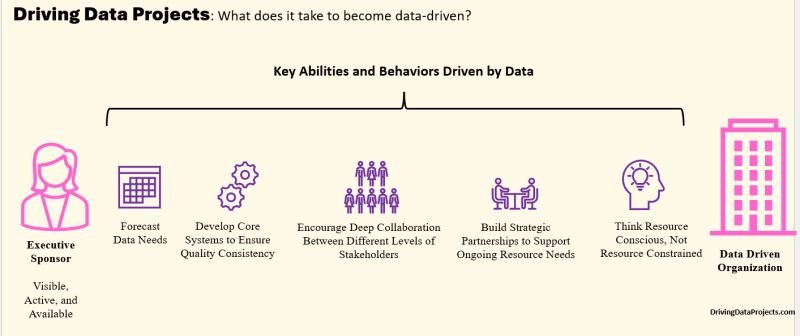
What does it take to become Data-Driven?
Since most people don’t know a lot about IT organizations or data teams it’s important to understand why moving from ad hoc efforts to a mature approach to driving data projects makes sense. The timing might not be right (now). Becoming data driven through data as a service requires a serious investment of resources, finances, staff, equipment, services, etc.; scaling efforts will only increase those topline demands. It’s a serious ongoing commitment many organizations find themselves surprised by—even today.

Finding Meaning in Data Projects by Asking: WHY
Most data teams cover WHAT and HOW with standard reports and KPIs. They will optimize processes and analyze business domains that will impact the company's bottom line from a data perspective. But how many data teams truly understand the WHY behind the reports they generate? How many actively consult with the business as a true partner to understand the underlying business concerns behind the numbers? Without the WHY, delivering true value in the WHAT and HOW is ten times harder.

Data Consumers Must Be Mechanics & Pilots: 5 Takeaways from the Guide
As data consumers, we need to be both mechanics and pilots. We must know how to gather, cleanse, and prep—and present data, make data-driven decisions, and influence data. That is a very broad set of skills.
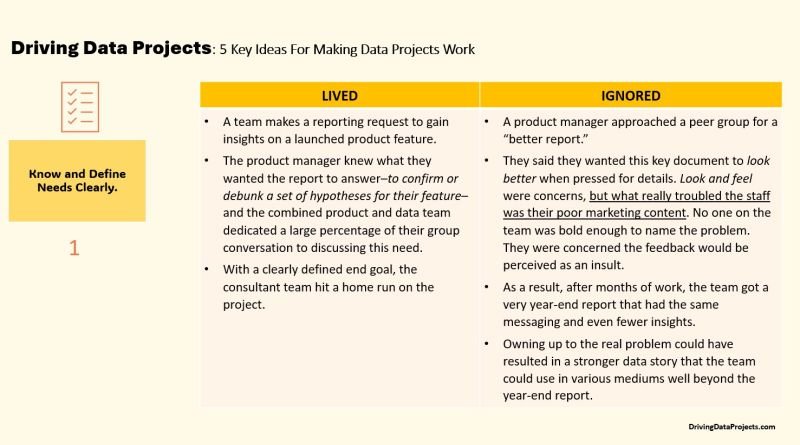
Going Deeper: Making Projects Work
When we live into our best intentions, things that sound like common sense to everyone (like defining needs clearly), there is no end to the impact we can make. Such a seemingly small thing can permeate the mood and morale of the team, the synergy between team members, and raise the performance of the group. Such clarity can literally become the wind needed from behind versus a nasty headwind we feel we have to fight. And the crazy thing? It’s within our control to bring that clarity to every conversation.